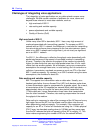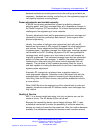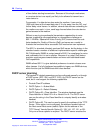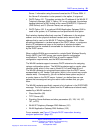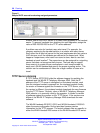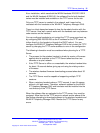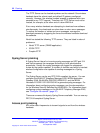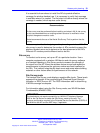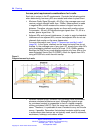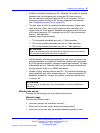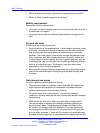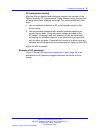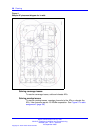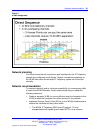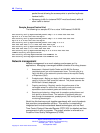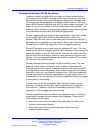
34 Planning
Access point requirement considerations for b radio
Each site is unique in its AP requirements. Consider the following points
when determining how many APs are needed and where to place them:
• Minimum Radio Signal Strength—All APs in the coverage area must
receive a signal strength better than -70dBm. Measurement is made
in negative dBm, which measure the amount of signal loss due to
distance. Therefore, stronger signals are those with smaller values.
For example, -50 and -60 indicate stronger signals than -70; -80 is a
weaker, poorer signal than -70.
• Adjacent APs and channel interference—In order to avoid undesirable
interference from adjacent APs, ensure that adjacent APs do not use
channels that overlap on the same frequencies.
For more information, see Figure 3 "Frequencies used by b radio"
(page 34). In the figure, channels on the same horizontal line do not
overlap. In the coverage area of any given AP, signals from other APs
using overlapping channels must be at least -15 to -20dBm weaker.
Because the Site Survey mode displays signals only from APs on the
same Extended Service Set ID (ESSID), check for signals from APs
using all ESSIDs to avoid channel overlap.
Figure 3
Frequencies used by b radio
• Wireless handset range—Wireless LAN coverage must be available
wherever wireless handsets are used. Although the typical range
for a wireless handset is comparable to that of a laptop computer
utilizing a wireless LAN PC Card, the range can not be exactly the
same. Therefore, it is preferable to use a handset to carry out the site
survey, if possible. Remember that wireless handsets might be used
in areas where data devices are not typically used, such as stairwells,
washrooms, hallways, and outdoor areas.
Nortel Communication Server 1000
WLAN IP Telephony Installation and Commissioning
NN43001-504 03.04 Standard
23 September 2008
Copyright © 2004–2008 Nortel Networks
.



